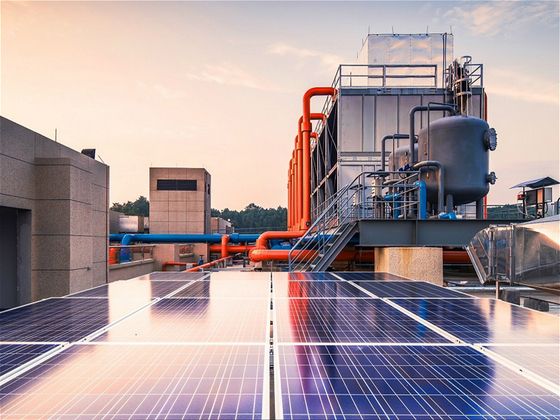Data Centres and Water Consumption
Published on by Water Network Research, Official research team of The Water Network in Technology
Tech companies are turning to energy-efficient data facilities to cut costs and reduce energy use.
 China’s 1.37 billion people, many of them fully connected to the Internet, use an enormous amount of energy as they email, search the Web, or stream video. Indeed, the Chinese government estimates that the country’s data centres alone consume more electricity than all of Hungary and Greece combined.
China’s 1.37 billion people, many of them fully connected to the Internet, use an enormous amount of energy as they email, search the Web, or stream video. Indeed, the Chinese government estimates that the country’s data centres alone consume more electricity than all of Hungary and Greece combined.
With China’s electricity produced mainly from coal, every WeChat message Chinese citizens send helps to speed up global warming. Meanwhile, a large amount of water is being used to cool data centres, further exacerbating shortages in this already water-stressed nation.
But as Chinese technology and Internet businesses look to burnish their environmental credentials and lower costs of operation, many are working to reduce electricity and water usage at their massive computing facilities.
The data centres are installing energy-efficient equipment and water-saving cooling towers, as well as making fundamental design changes in data centres to cut energy demand.
In Hangzhou, next to eastern China’s Qiandao Lake, the e-commerce giant Alibaba Group has developed a data centre tapping natural water bodies for cooling — the first of its kind in the nation. By using water from the lake to cool servers, Alibaba has been able to stop employing mechanical chillers for most of the year. The water then flows through a 1.5-mile-long canal until the water temperature drops and returns to the lake with minimal impact.
Technicians at the Alibaba facility also monitor heat output of individual servers and provide cooling only if necessary. The company says both efforts have enabled the data centre to use 80% less energy compared with conventional methods.
“Chinese data centre players in recent years have begun to take energy conservation seriously,” said He Chunhua, the secretary-general of Beijing-based China Green Data Centre Advancing Federation. Her organisation has already attracted dozens of companies to join the group, He Chunhua said.
 In the United States, technology giants Microsoft, Google, and Amazon have emerged as leaders in the field of making giant data centres more efficient and powering them with renewable energy.
In the United States, technology giants Microsoft, Google, and Amazon have emerged as leaders in the field of making giant data centres more efficient and powering them with renewable energy.
Microsoft’s operations have been 100% powered by renewable energy since 2014, either by purchasing the alternative energy or by generating it, as it does using 2,200 solar panels on its Silicon Valley campus.
Google is aiming to power its data centres and other operations entirely with renewable energy, and so far has contracted with alternative energy suppliers to buy more than 2.2 gigawatts of electricity.
Amazon is building wind farms to power its data centres and other operations, has set a renewables goal of 100%, and by the end of this year is hoping to power its infrastructure using 40% renewables.
No one knows exactly how many green data centres exist in China, partly because the country doesn’t have a clear definition of what a green data centre is. But anecdotal evidence suggests computing facilities with smaller environmental footprints are growing in popularity.
Read full article at: Yale Environment 360
Media
Taxonomy
- Water-Energy Nexus
- Consumption
- Energy-Water Nexus
- Renewable Energy
- Data